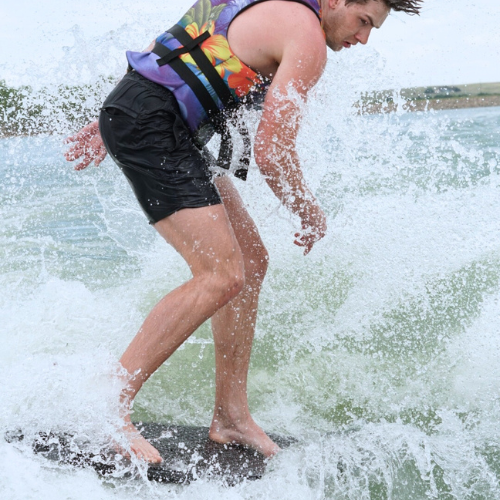
Mastering the 360: Choosing the Right Wakesurf Board for Spinning
Share
As your wakesurfing skills progress, you'll naturally be drawn to learning new tricks. One of the first major feats for many riders is mastering the 360 - a full circle rotation on the water, starting and ending in a forward position. Though challenging, understanding the characteristics of a board that aid in spinning can be a significant advantage.
Weight and Its Impact on Spinning
Static Friction
The weight of the board plays a pivotal role in its spinning capability. Intuitively, a heavier board requires more effort to spin compared to a lighter one. The primary reason lies in the need to overcome static friction with the water. The heavier the board (and rider), the greater the force needed to initiate movement and overcome this friction.

Momentum
Beyond static friction, weight also affects a board's momentum - a key factor in spinning. Heavier boards demand more momentum to initiate a spin. Although the detailed physics are complex, it's sufficient to understand that increased weight means more momentum is necessary, making spinning more challenging. The opposite is true of lighter boards. Lighter boards mean that you need less momentum to get the board spinning around.
Surface Area: The Friction Factor
Another critical factor is the board's surface area in contact with the water. Larger surface areas, typically found on longer boards and wider boards, create more friction with the water, hindering the ability to spin. While we may not think that water has a lot of friction, that small amount of friction it does have plays a key role in getting the board around quicker. For optimal spinning, the goal is to minimize surface area and thus reduce friction.
Radius of Curvature: The Key to Agility
If you don't know what the radius of curvature of your wakesurf board is don't worry! I would hazard a guess that most people don't know what we talk about when we say radius of curvature. In the case of wakesurf boards this can be thoughts of as the rail curvature. Boards with a small radius of curvature are most often seen on skim boards where the rail is shaped like an ellipse. Boards with larger radius of curvatures can be thought of as those long surf style boards which tend to have fairly straight rails.
The radius of curvature of the board significantly affects its spinning efficiency. A smaller radius of curvature allows for tighter, more agile turns. This is because a board with a smaller radius travels a shorter distance during a spin, making the movement more efficient and requiring less effort.
The Ideal Wakesurf Board for 360's
When searching for a wakesurf board that excels in spinning, prioritize the following:
- light weight
- minimal surface area
- smaller radius of curvature.
